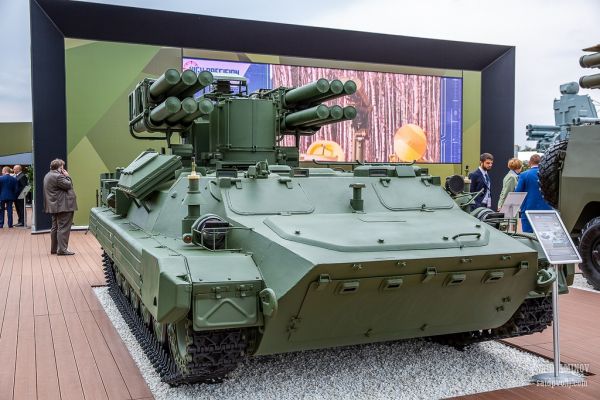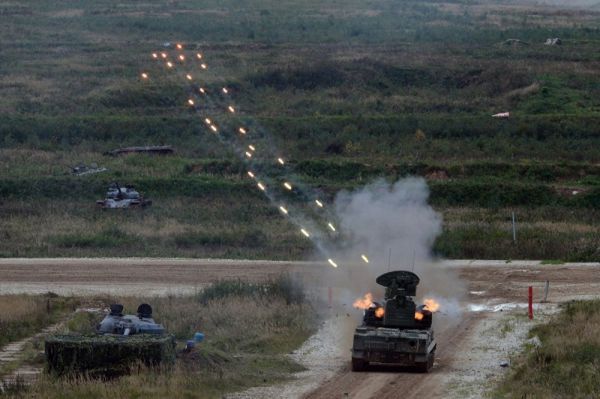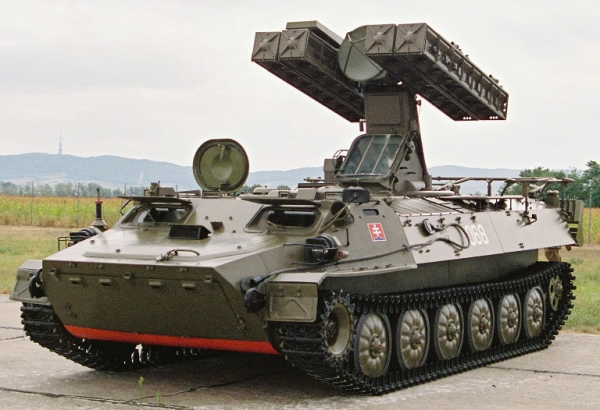Russian new short-range air defense system debut: suitable for combat in complex electromagnetic environment
Reference message networkReported on September 4On August 23rd, the website of Jane’s Defense Weekly published a report entitled "Army -2018" Weapons Exhibition: Russia Releases the Production Version of "Pine Tree" Short-range Air Defense System, saying that at the "Army -2018" Weapons Exhibition held in Kubinka near Moscow from August 21st to 26th, Russia publicly released the "Pine Tree" short-range mounted on MTLB multi-purpose tracked armored vehicles for the first time.
According to the report, "Pine Tree" is a key defense system developed by Nudelman Design Bureau, and it was also loaded on BMD-4 infantry fighting vehicle for display. The system loaded by MTLB is called "Pine Tree", but the system loaded by BMD-4 is called "Puji Tselov". The manufacturer said that the turret and the complete system were called "Pine Tree", but also said that "Pine Tree" was an export version, and the version in the Russian army was called "Duxiang".
This system can be loaded on other platforms according to customer requirements. The system has two crew members: the driver and the gunner. It is equipped with a set of optical sensors, including a remote thermal imager for target capture and fire control.

Profile picture: The "Pine Tree" short-range air defense system at the "Army -2018" defense exhibition. (Image from the Internet)

Profile picture: Russian 2K22 "Tunguska" self-propelled air defense system uses rapid-fire guns to fire. (Image from the Internet)
According to the report, the system is equipped with 12 9M340 missiles, which are installed in storage and transportation launch boxes, and there is a launch unit on each side of the turret (each unit contains 6 missiles). This layout is similar to the 9M331 missile used in the 2K22 Tunguska system, but it uses laser beam guidance instead of radio frequency control. This 38kg missile contains a large high-explosive warhead with a trigger fuse and a proximity fuse (non-trigger fuse). Each missile unit can be raised independently. These missiles have a maximum linear range of 10 kilometers and a shooting height of 5 kilometers. All missile units can be reloaded within 8 to 10 minutes, and the response time of the system from detecting the target to attacking the target is 5 to 8 seconds. The system can be launched on the move, and can attack ground targets, with limited (light) armor penetration.
In 2016, the Russian Army decided to purchase the "Pine Tree" system, although the purchase quantity has not been confirmed. In 2017, the missile of "Duxiang" air defense missile system passed the national test, and will replace the 9K35M3 "Arrow -10M3" system currently serving in the Russian Army (which uses 9M37M infrared guided missile).

"Pine Tree" system only relies on the passive infrared radiation of the target to acquire the target and carry out fire control, which, together with its hard-to-fight laser beam guidance system, makes it particularly suitable for fighting in controversial electromagnetic environment.In view of the fact that Russia has recently purchased a variety of electronic warfare equipment for ground troops, it seems to meet the requirements of Russian operational theory.
According to the report, although laser beam steering guidance has its advantages, it needs a launch vehicle to track and control the missile until it hits or approaches the target. This may cause the launch vehicle to be countered by enemy fire, in addition, the missile tracking system (rather than the laser beam guidance system itself) will be subject to electronic interference, and the missile will be subject to some active interference. The launch of missiles and their propulsion to cruising speed will also generate considerable electromagnetic (visible, infrared and ultraviolet) signals, which can be used by sensors on the target aircraft or vehicles to detect missile launch and prepare for defense or counterattack. (Compile/Feng Xue)